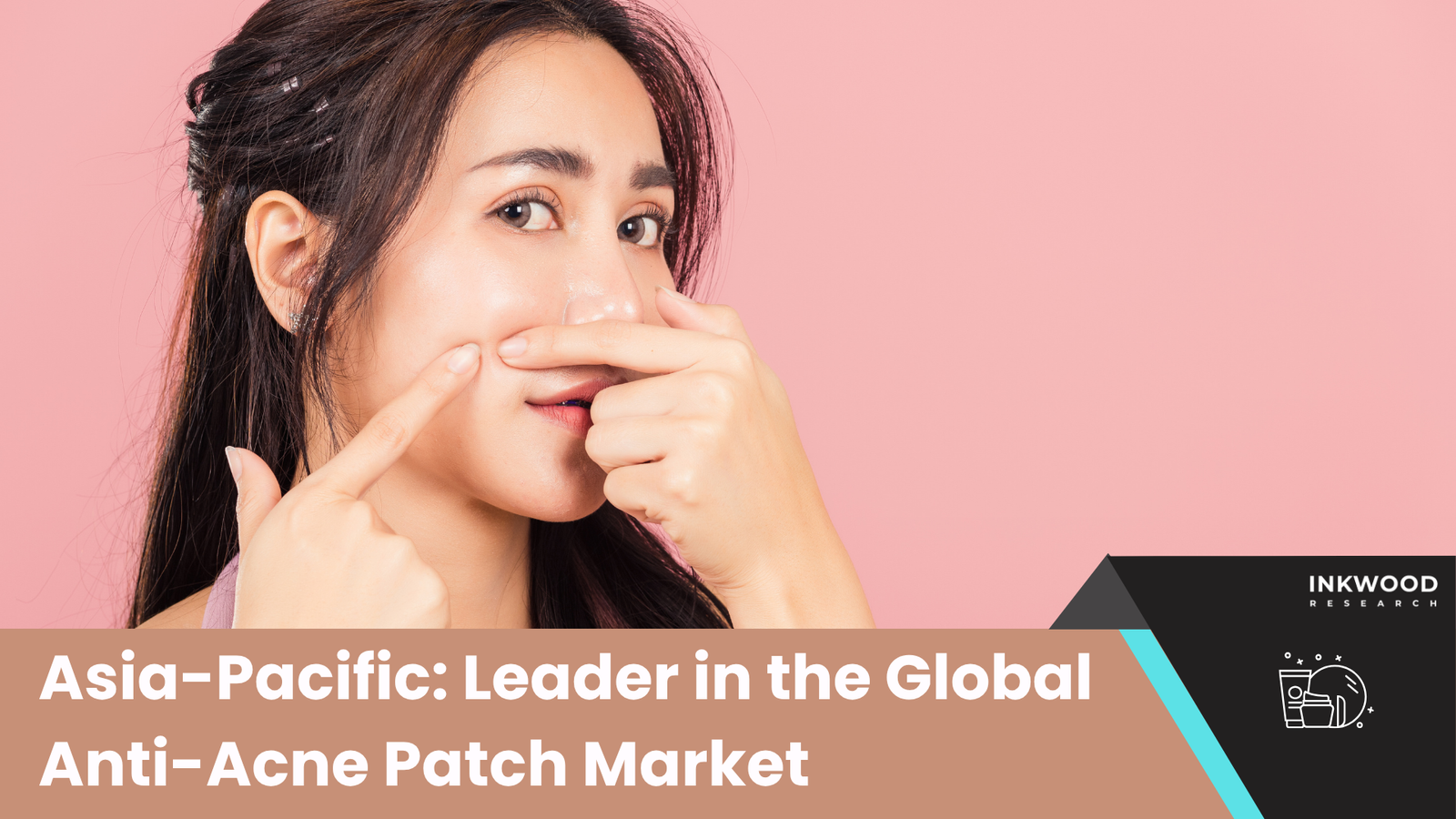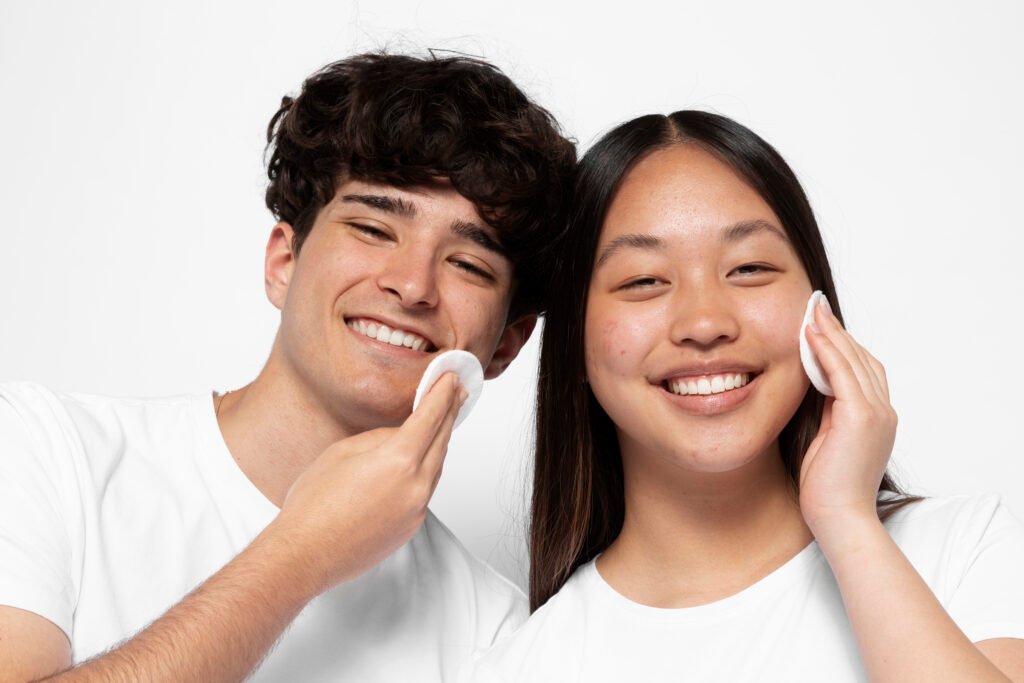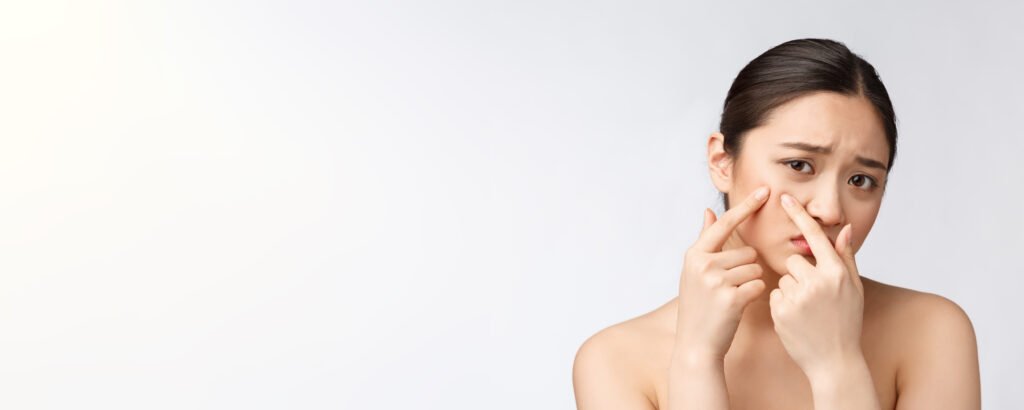The anti-acne dermal patch market revolution began in Asia-Pacific, where innovative pimple patches transformed global acne treatment. Revolutionary skin care products featuring salicylic acid emerged from K-beauty laboratories before conquering worldwide markets.
Furthermore, these advanced pimple patches tackle acne vulgaris more effectively than traditional Western acne treatments. APAC’s technological leadership drives the entire acne patch industry forward through cutting-edge research and consumer-centric innovation.
Asia-Pacific’s dominance isn’t accidental, but a result of cultural perfectionism, technological innovation, and massive demographic advantages. The Asia-Pacific anti-acne dermal patch market is estimated to achieve revenue at 7.01% CAGR during 2025-2032. These statistics reveal APAC’s commanding position in shaping global skincare trends.

The Cultural Genesis: Why APAC Dominates Modern Acne Patches
Asian beauty standards demand flawless, poreless skin that appears naturally perfect. Unlike Western approaches that often embrace natural imperfections, APAC cultures prioritize skin clarity as a fundamental aspect of personal presentation. This cultural imperative created massive market demand for effective, discrete acne treatment solutions.
Traditional Asian skincare philosophies emphasize prevention over correction, leading to innovative products that address problems before they become severe. Acne patches perfectly align with this philosophy by providing immediate intervention at the first sign of blemish formation.
The 10-Step Skincare Revolution | APAC Market
Korea pioneered the multi-step skincare routine that became globally famous as the “10-step Korean skincare routine.” This comprehensive approach created consumer acceptance for specialized products targeting specific skin concerns. Acne patches naturally fit into this detailed regimen as targeted treatment tools.
Min-Jung, a Seoul-based dermatology researcher, explains how Korean consumers embrace product specificity: “Western consumers often seek one product that solves multiple problems. Korean consumers prefer ten products that each solve one problem perfectly.” This mindset created the perfect environment for acne patch development.
Technological Supremacy: APAC’s Innovation Edge
Hydrocolloid Mastery
Asian manufacturers perfected hydrocolloid technology long before Western brands recognized its potential. Korean medical device companies initially developed advanced hydrocolloid dressings for wound care. The transition to cosmetic applications happened naturally as beauty brands collaborated with medical manufacturers.
South Koreans are open to new products in the skin care industry primarily because they have advanced technology in beauty and skincare trends. This technological openness accelerated acne patch innovation cycles, allowing rapid iteration and improvement.
Microneedle Breakthrough
Japanese pharmaceutical companies pioneered microneedle technology for transdermal drug delivery. Beauty brands quickly adapted this technology for acne treatment, creating patches that deliver salicylic acid and other active ingredients directly into affected tissue. This innovation represents a quantum leap beyond surface-level treatments.
Dr. Hiroshi Tanaka, a Tokyo-based cosmetic chemist, developed some of the first microneedle acne patches. His research team discovered that controlled ingredient delivery through microscopic needles achieved 300% better penetration than traditional topical applications. This breakthrough established APAC’s technological leadership in advanced acne treatment.
Smart Material Science
Chinese materials science laboratories developed shape-memory polymers that adapt to individual facial contours. These materials ensure optimal patch adhesion regardless of facial movement or expression. Additionally, Chinese manufacturers created breathable films that maintain skin oxygenation during extended wear periods.
Demographic Advantages Fueling Market Growth in the Asia-Pacific

Massive Youth Population
APAC contains the world’s largest population of teenagers and young adults—the primary acne-affected demographic. Asia-Pacific is projected to witness the highest CAGR due to its substantial and expanding population of young and urban consumers. This demographic advantage creates unparalleled market demand for effective acne treatment solutions.
India alone has over 600 million people under age 25, representing a massive potential market for acne treatment products. China’s youth population exceeds the entire population of Europe, creating scale advantages that drive innovation and cost reduction.
Urbanization and Pollution Stress
Rapid urbanization across APAC exposes millions to air pollution, stress, and lifestyle factors that exacerbate acne conditions. Urban dwelling increases acne prevalence by 40% compared to rural environments. This environmental challenge created urgent demand for effective, convenient acne treatment solutions.
Bangkok resident Siriporn noticed her skin deteriorating after moving from rural Thailand to the capital city. Air pollution and work stress triggered persistent breakouts that traditional treatments couldn’t address effectively. Discovering Korean acne patches through social media transformed her skincare routine and confidence levels.
Economic Powerhouses Driving Global Expansion
South Korea’s Beauty Export Machine
2024 cosmetic exports from South Korea increased by 20.6% year-on-year to USD 10.2 billion, with China remaining the largest importer at USD 2.5 billion. Korean beauty brands leverage government support, advanced manufacturing, and cultural soft power to dominate global markets.
Korean companies invest heavily in research and development, spending up to 15% of revenue on innovation compared to 3-5% for Western competitors. This investment creates continuous product improvement cycles that maintain competitive advantages.
Japan’s Precision Manufacturing
Japanese manufacturers bring legendary quality control standards to acne patch production. Their focus on manufacturing precision ensures consistent product performance across millions of units. Japanese companies pioneered automated patch production lines that maintain sterile conditions while achieving economies of scale.
Toyota’s manufacturing philosophy influenced Japanese beauty companies to adopt continuous improvement methodologies. This approach results in products that consistently exceed consumer expectations while reducing production costs over time.
China’s Scale and Speed Advantages
Chinese manufacturers combine massive production capacity with rapid innovation cycles. They can scale successful products to global volumes within months rather than years. Additionally, Chinese companies excel at cost optimization without compromising essential quality parameters.
Guangzhou-based manufacturer Chen Industries can produce 10 million acne patches daily across multiple SKUs. Their flexible production systems adapt quickly to changing consumer preferences and emerging ingredient technologies.
Consumer Behavior Patterns Unique to APAC
Social Media Integration
APAC consumers heavily integrate social media into beauty purchasing decisions. Platforms like Xiaohongshu (Little Red Book), Instagram, and TikTok drive massive viral trends around specific acne patch brands and application techniques. This social commerce environment accelerates product adoption rates.
Korean influencer Park So-young’s acne patch transformation video received 15 million views across platforms, generating USD 2 million in immediate sales for featured brands. This demonstrates the powerful connection between social influence and purchasing behavior in APAC markets.
Group Purchasing Culture
Many APAC cultures emphasize collective decision-making and group purchasing behaviors. Friends, family members, and colleagues frequently purchase skincare products together to achieve bulk discounts and share experiences. This behavior pattern amplifies successful product launches.
Quality Over Price Sensitivity
Despite economic diversity across APAC, consumers consistently prioritize product effectiveness over lowest pricing. They willingly pay premium prices for products that deliver superior results. This quality focus supports continued innovation and premium positioning.
Regulatory Environments Supporting Innovation in the APAC Skincare Industry
- APAC regulatory systems generally provide faster approval pathways for cosmetic innovations compared to Western markets. South Korea’s Ministry of Food and Drug Safety processes acne patch approvals in 6-12 months versus 18-24 months in Europe or North America.
- Asian governments actively support beauty industry innovation through grants, tax incentives, and research partnerships. South Korea’s K-Beauty Initiative provides funding for companies developing breakthrough skincare technologies. China’s Made in China 2025 strategy identifies cosmetics as a strategic industry deserving government support.
- APAC regulators adapt quickly to emerging technologies and ingredient innovations. This flexibility allows companies to bring advanced acne patch formulations to market faster than competitors operating under rigid Western regulatory systems.

Ingredient Innovation Leadership
Traditional Medicine Integration
APAC companies excel at combining traditional medicinal ingredients with modern patch technology. Tea tree oil, centella asiatica, green tea extract, and ginseng represent natural alternatives to synthetic active ingredients. This integration appeals to consumers seeking effective yet gentle treatments.
Fermentation Technology
Korean companies pioneered fermentation processes that enhance ingredient bioavailability and reduce allergenicity. Fermented ingredients penetrate skin barriers more effectively while minimizing irritation risks. This technology gives APAC brands significant advantages in sensitive skin markets.
Nanotechnology Applications
Japanese and Chinese research institutes develop nanosized carriers that improve salicylic acid delivery efficiency. These microscopic delivery systems ensure active ingredients reach target locations without affecting surrounding healthy tissue.
Market Penetration Strategies in the Asia-Pacific
- APAC companies master omnichannel distribution combining online platforms, physical retail, and social commerce. They seamlessly integrate inventory management, customer service, and marketing across multiple touchpoints. This comprehensive approach maximizes market penetration efficiency.
- Asian brands invest heavily in consumer education about proper acne patch usage, skin type identification, and routine integration. Educational content builds trust and loyalty while reducing product misuse that could damage brand reputation.
- APAC companies excel at adapting products for different regional preferences, climate conditions, and cultural requirements. They modify patch sizes, adhesive strength, and active ingredient concentrations based on local market needs.
Competitive Advantages Over Western Brands
Speed to Market:
APAC companies typically launch new acne patch innovations 6-12 months faster than Western competitors. This speed advantage allows them to establish market leadership before slower competitors can respond effectively.
Manufacturing Cost Efficiency:
Asian manufacturers achieve 20-40% lower production costs through advanced automation, efficient supply chains, and economies of scale. These cost advantages enable competitive pricing while maintaining healthy profit margins.
Consumer Intimacy:
APAC brands maintain closer relationships with consumers through social media engagement, community building, and responsive customer service. This intimacy generates valuable feedback that drives continuous product improvement.
Future Growth Trajectories
- APAC companies lead development of AI-powered skin analysis tools that recommend optimal acne patch selections. These technologies will enable personalized treatment protocols based on individual skin characteristics and environmental factors.
- Asian manufacturers invest heavily in biodegradable patch materials and sustainable packaging solutions. Environmental consciousness increasingly influences purchasing decisions, particularly among younger consumers.
- APAC companies explore patch technology applications for other skin concerns including hyperpigmentation, fine lines, and hydration delivery. These innovations expand addressable markets while leveraging existing technological capabilities.
Conclusion
APAC’s leadership in the anti-acne dermal patch market stems from unique cultural advantages, technological innovation, demographic scale, and consumer-centric business models. The region’s 41.5% global market share reflects deep competitive advantages that continue expanding through ongoing innovation and strategic market development.
The convergence of cultural perfectionism, technological capability, and massive market scale creates an innovation ecosystem unmatched globally. The Asia Pacific acne medication market was valued at USD 1.5 billion in 2022 and is projected to reach USD 2.67 billion by 2030, demonstrating continued growth momentum.
Western competitors attempting to challenge APAC dominance face significant structural disadvantages including slower innovation cycles, higher manufacturing costs, and limited understanding of Asian consumer preferences. Additionally, APAC companies continue strengthening their global positions through strategic acquisitions, partnership formations, and market expansion initiatives.
Frequently Asked Questions (FAQs)
The region’s early adoption of skincare routines, high beauty awareness, and cultural acceptance of targeted treatments created the perfect environment for patch development. Major brands like COSRX and innovative manufacturing capabilities in Japan, China, and Singapore have established APAC as both the largest consumer market and primary innovation center for anti-acne patches globally.
South Korea leads as the innovation epicenter, expected to reach $79.61 million by 2032, thanks to advanced K-beauty research and brands like COSRX. Japan follows with precision-engineered patches featuring pharmaceutical-grade salicylic acid formulations. China’s massive consumer base drives volume growth through domestic brands and international adoption, while Singapore and Taiwan contribute through tech-forward beauty markets. Australia represents the fastest-growing Western market within APAC, with premium skincare spending fueling demand for both medicated and cosmetic patch varieties.
